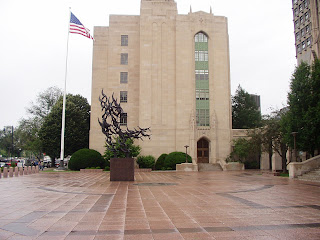Historical Profile: Martin Luther King, Jr.
 On the third Monday in January, a national holiday recognizing the contributions of Martin Luther King, Jr. takes place. King was born on January 15, 1929, in Atlanta, Georgia into a family where education, service, and religion were emphasized. His mother, Alberta Williams King, was a schoolteacher, and his father, Martin Luther King, Sr. was a minister.
On the third Monday in January, a national holiday recognizing the contributions of Martin Luther King, Jr. takes place. King was born on January 15, 1929, in Atlanta, Georgia into a family where education, service, and religion were emphasized. His mother, Alberta Williams King, was a schoolteacher, and his father, Martin Luther King, Sr. was a minister. In September 1944, at the age of 15, he enrolled as an undergraduate student at Morehouse College in Atlanta, Georgia, where he majored in sociology. After becoming an ordained Baptist minister on February 25, 1948, King graduated from Morehouse in the same year.
King continued his education at Crozer Theological Seminary, in Chester, Pennsylvania. While at Crozer, he studied the teachings of Christian and Hindu philosophers. King discovered the power that non-violence could have on creating social change. King would later implement these teachings into his career as a civil rights activist. In June, 1951, at the age of 22, King earned a Bachelor of Divinity degree from Crozer. He was also president of his graduating class and valedictorian.
Eventually, King moved to Boston, Massachusetts, where he began his doctoral studies at Boston University School of Theology. While in Boston, he met Coretta Scott, who was a voice major at the New England Conservatory of Music. On June 18, 1953, Coretta and Martin were married and they would later have 4 children. On June 5, 1955, King earned a Ph.D. in systemic theology from Boston University.
After completing his doctorate, King moved to Montgomery, Alabama to become the pastor of Dexter Avenue Baptist Church. When Rosa Parks, a Montgomery seamstress, refused to give up her seat on a Montgomery bus, Dr. King helped organize the Montgomery Bus Boycott of 1955 – 1956.
In 1957, Dr. King founded the Southern Christian Leadership Conference; an Atlanta based civil rights organization. He also served as the organization’s first president. Soon, Dr. King became one of the primary leaders of the civil rights movement in America. On August 28, 1963, King delivered his famous “I Have a Dream” speech in front of over 200,000 spectators at The March on Washington for Jobs and Freedom.
For his continuous leadership as an advocate for the poor and disenfranchised, King received several accolades. Time Magazine named Dr. King as “Man of the Year” in 1963. On December 10, 1964, in Oslo, Norway, Dr. King was awarded the Nobel Peace Prize. At the age of 35 he was the youngest person ever to win the prestigious award. King’s life ended tragically when he was assassinated on April 4, 1968 at the Lorraine Motel in Memphis, Tennessee.
Four days after Dr. King’s death, U.S. Congressman John Conyers (D-Michigan), lobbied for a Congressional bill to create a national holiday to recognize the societal contributions of the slain civil rights leader. On November 2, 1983, in a ceremony held at the White House rose garden, President Ronald Reagan signed the King Holiday Bill. When signing the legislation, Reagan said: “But traces of bigotry still mar America. So each year on Martin Luther King Day, let us not only recall Dr. King, but rededicate ourselves to the commandments he believed in and sought to live every day.” The King Holiday Bill established that on the third Monday in January, a National Holiday would be observed in honor of Martin Luther King, Jr. The first King Holiday was held in 1986.
On May 16, 1975, Boston University President John R. Silber dedicated the Free At Last sculpture in honor of Dr. King on behalf of the university community. The sculpture, created by Sergio Castillo, depicts a 4 sided granite base with 50 doves perched above the base. The doves represent peace in all of the 50 states. Quotes from Dr. King are engraved in the sides of the granite base. The sculpture is located outside of Boston University’s Marsh Chapel on Commonwealth Avenue in Boston. On one portion of the base of the monument a quote from MLK, Jr. reads: “We must come to see that the end we seek is a society of peace that will be the day not of the white man, not of the black man. That will be the day of man as man.”
Dr. King’s legacy will be enshrined further with the creation of the Washington, D.C. Martin Luther King, Jr. National Memorial. Construction for the memorial began on December 16, 2009 and is set to be complete in the summer of 2011.


Comments
Post a Comment